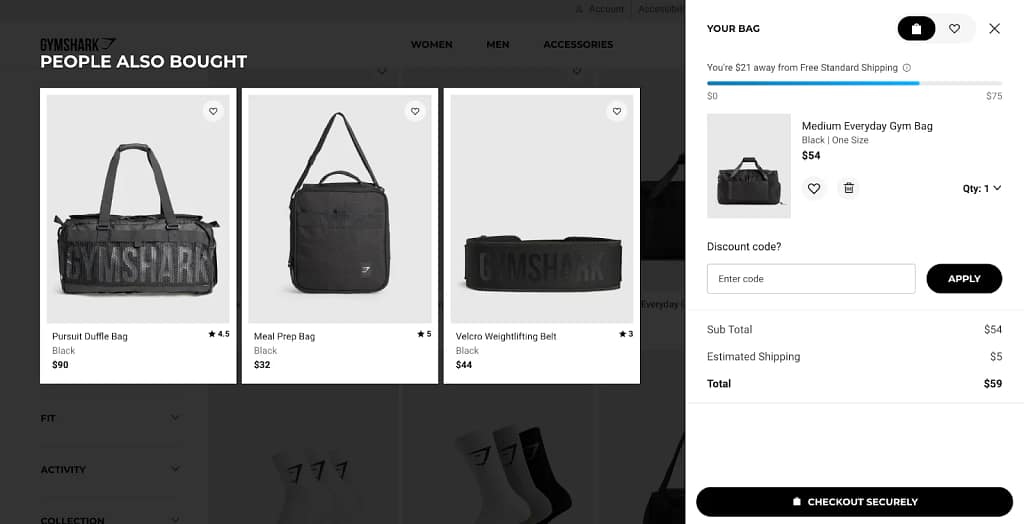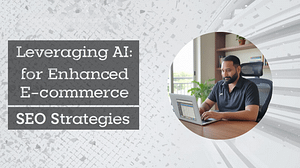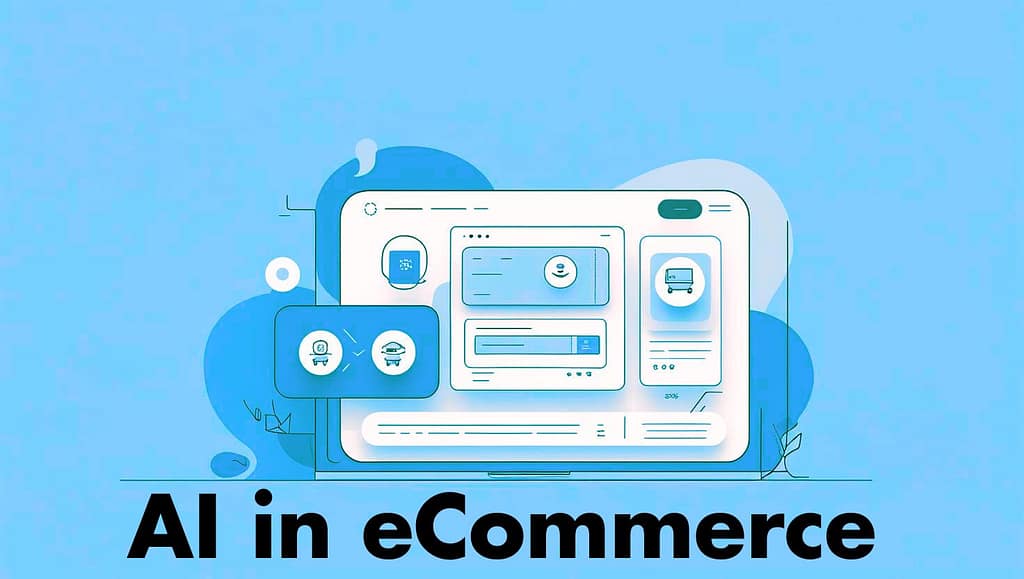Discover how AI tools are revolutionizing e-commerce sales in 2025. Learn about 15+ AI solutions driving 400% revenue growth with implementation guides.
Introduction: Why 2025 Is the AI Inflection Point
By 2025, AI has become the defining competitive advantage in Indian e-commerce. Brands are no longer competing on price and selection alone; they’re competing on intelligence. Consumers now expect personalized experiences, instant responses, and dynamic pricing that reflects real-time demand.
According to an EY India survey, 73% of retailers plan to increase AI investments this year, and Indian adoption rates at 30% already exceed the 26% global average. These investments are paying off: AI personalization engines can boost revenue per visitor by up to 40% (Statista), and chatbots increase conversions by 23% while resolving customer inquiries 18% faster (Glassix).
This comprehensive guide shows you how to harness free and freemium AI tools across every stage of the buyer journey—discovery, consideration, and conversion—to achieve measurable sales uplifts of 20–40%, 15–25% higher average order values, and up to 30% lower support costs.
We’ll provide data-driven insights, local relevance for the Indian market, and actionable steps you can implement immediately. Whether you’re an e-commerce manager striving for operational excellence, a startup founder building for scale, a tech professional driving AI initiatives, or an investor analyzing ROI, this guide equips you with everything needed to lead India’s intelligent retail revolution.
If you are struggling with your Customer retention don't Forget to check Below :
The Ultimate Guide to AI Powered Customer Retention Optimization for D2C Success
AI Adoption in Indian E-commerce: Key Statistics
The numbers behind AI adoption illustrate why 2025 is a pivotal year for Indian e-commerce. A recent Bain & Company report reveals that 71% of Indian consumers now expect highly personalized shopping experiences, putting pressure on brands to deliver tailored recommendations and dynamic content.
Meanwhile, Statista data shows that personalization engines can drive up to a 40% increase in revenue per visitor—an uplift that translates directly into higher order values and improved profitability.
India’s retail market is projected to surge from ₹4,380 crore in 2024 to ₹26,000 crore by 2030, according to Grand View Research. This rapid growth trajectory creates both opportunity and urgency for brands to adopt AI solutions. Chatbots, for example, boost conversions by 23% and resolve customer issues 18% faster, as documented by Glassix.
When deployed on messaging platforms like WhatsApp Business (ubiquitous in India), AI-powered bots can handle peak volumes without additional headcount, ensuring consistent customer support across time zones and languages.
Moreover, 73% of Indian retailers indicated plans to expand AI usage in the next 12 months, putting them ahead of the global average in AI readiness. Given this momentum, the brands that embrace free and freemium AI tools now—rather than waiting for enterprise solutions—stand to capture disproportionate market share.
These tools not only lower entry barriers but also demonstrate that intelligent retail is accessible even to smaller businesses with limited budgets.
Ready to redefine your customer retention strategy? Let's connect to understand your goals and tailor the right solution for you.
How AI Transforms the Buyer Journey
Discovery: Visual & Voice Search
Visual and voice search have revolutionized product discovery by aligning online shopping with natural human behaviors. Rather than typing complex queries, customers simply upload an image or speak a request in Hindi or English. According to Google Lens usage statistics, visual searches exceed 4 billion queries per month globally, highlighting the shift toward image-based discovery.
In India, where smartphone penetration stands at over 600 million users, integrating visual search provides a frictionless path from inspiration to purchase.
Key Tools & Free Tiers
- Google Lens API (free for up to 1,000 requests/day): Enables users to snap photos or upload images to find matching products instantly.
- Aimybox Voice AI (free plan): Supports multilingual voice interactions, letting customers say “Show me red salwar suits under ₹2,000” and receive instant results.
Impact Metrics
- Visual search integration boosts user engagement by 15%, reducing bounce rate on category pages.
- Voice search capabilities lead to 20% faster time-to-find on mobile, enhancing mobile-first experiences critical in Bharat.
Actionable Implementation
- Add an “Upload Image” button on product listing pages.
- Integrate Aimybox voice widget for contextual voice commands.
- Track “search-to-purchase” funnel with UTM tags—aim for a 10% uplift in funnel conversion within 3 months.
Consideration: Personalized Recommendations
Once customers arrive, personalization engines reduce decision fatigue by surfacing products most relevant to each user. With up to 40% more revenue per visitor reported by companies using AI-driven recommendations (Statista), this is where e-commerce managers can capture significant uplifts in average order value (AOV).

Key Tools & Free Tiers
- Nosto (free tier up to 1,000 unique visitors/month): Provides real-time product recommendations, pop-ups, and cross-sell modules.
- TensorFlow Lite on Google Colab (free GPU hours): Allows custom model training for on-device recommendations, minimizing latency.
Impact Metrics
- Personalized recommendations drive a 15–20% uplift in AOV, translating directly into revenue growth.
- Email campaigns using AI-curated product lists achieve 20% higher click-through rates compared to generic blasts.
Actionable Implementation
- Train a collaborative filtering model on Colab using purchase history data.
- Embed recommendation widgets on homepage, category, and cart pages—monitor AOV and CTR changes.
- Use Mailchimp’s AI personalization features to send “Recommended Products” in transactional and promotional emails.
Conversion: Chatbots & Dynamic Pricing
Driving conversions requires reducing friction and optimizing pricing in real time. AI chatbots handle up to 80% of common customer queries, freeing support teams to focus on complex issues. Chatbots recover abandoned carts by proactively engaging users—brands report up to 67% increase in recovery revenue.
Key Tools & Free Tiers
- Google Dialogflow (1,000 text requests/month free): Easily integrates with website chat widgets and WhatsApp Business.
- Rasa Open Source (free): Self-hosted, customizable conversational AI—ideal for data privacy and advanced dialog flows.
- Pricemoov (freemium): Provides dynamic pricing engines that adjust rates hourly based on demand, competitor prices, and inventory.
Impact Metrics
- Chatbots boost conversions by 23% and accelerate response times by 50–70%.
- Dynamic pricing yields 10–25% revenue uplift, optimizing margin without manual repricing.
Actionable Implementation
- Configure Dialogflow chat flows to address FAQ, shipping, and cart recovery.
- Set up Pricemoov rules: use competitor scraping for price adjustments and test pricing elasticity with A/B tests.
- Track conversion rate and revenue lift in your analytics platform—target a 15% improvement within 3 months.
Ready to redefine your customer retention strategy? Let's connect to understand your goals and tailor the right solution for you.
Top Free & Freemium AI Tools for Immediate Impact
| Category | Tool | Free Tier | Key Benefit |
| Chatbots | Dialogflow | 1,000 text requests/month | −50% response time, +23% conversions |
| Rasa Open Source | Unlimited self-hosted | Full data control | |
| Recommendations | Nosto | Up to 1,000 visitors/month | Plus 15% AOV |
| TensorFlow Lite | Free open source | On-device personalization | |
| Visual & AR | ViSenze | Freemium | −30% returns |
| Augment | Free plan | AR try-on feature | |
| Content Generation | Hugging Face | Free models | 70% faster content creation |
| Data Analysis | Google Colab | Free GPU/TPU hours | Rapid prototyping |
| Dynamic Pricing | Pricemoov | Freemium | 10-20% Dynamic revenue |
| Wiser | Free trial | Real-time price updates | |
| Forecasting | Amazon Forecast | Free tier (10k forecasts/month) | 85% accuracy for festival demand |
| Email Personalization | Mailchimp AI | Free to 1,000 contacts | Plus 20% email CTR |
Key Insights: Begin with chatbots and recommendations—quick wins with tangible ROI—before expanding into forecasting and dynamic pricing. Each tool listed integrates via REST APIs, ensuring minimal development overhead.
Step-by-Step Implementation Roadmap
Phase 1: Data Audit & Chatbot Launch (Months 1–3)
- Data Audit: Centralize CRM, orders, and analytics in Google BigQuery (free tier).
- Chatbot: Build a Dialogflow bot supporting Hindi and English on web/WhatsApp.
- Metrics: Track response time, cart abandonment recovery, and CSAT.
Phase 2: Personalization & Email AI (Months 4–6)
- Train Model: Use TensorFlow Lite in Colab to build a recommendation engine.
- Deploy Widgets: Add “Recommended for You” sections on key pages—A/B test for AOV lift.
- Email AI: Trigger personalized product emails via Mailchimp AI.
Phase 3: Predictive Analytics & Pricing (Months 7–12)
- Demand Forecasting: Use Amazon Forecast to predict spikes for Diwali, Eid (85%+ accuracy).
- Dynamic Pricing: Integrate Pricemoov for hourly price updates.
- Dashboard: Visualize KPIs in Google Data Studio (free).
Measuring Success: KPIs That Matter
- Conversion Rate: +15–25% from AI features
- Average Order Value: +10–20% via personalized recommendations
- Customer Satisfaction (CSAT): ≥90% after chatbot deployment
- Inventory Turnover: +20–30% through predictive forecasting
- AI ROI: Aim for at least 3:1 within first year
Tips: Use Google Data Studio (free) for real-time dashboards and alerts.
Overcoming Common Challenges
- Data Privacy: Leverage Google DLP API to anonymize PII and comply with DPDP Act.
- Skill Gaps: Upskill via free Coursera/YouTube AI courses; host internal hackathons.
- Legacy Integration: Favor API-first, cloud-native tools for seamless adoption.
Future Trends: 2026–27
- Generative AI: Automate product descriptions, marketing copy, and even dynamic video ads.
- Voice Commerce: Optimize for regional language voice search—Hindi, Tamil, Marathi.
- AR Showrooms: Employ WebAR frameworks (8th Wall, AR.js) for immersive virtual storefronts.
Conclusion & Immediate Next Steps
- Deploy Dialogflow chatbot this week—measure response and CSAT uplift.
- Prototype recommendation model in Google Colab by month’s end—track AOV improvement.
- Launch dynamic pricing with Pricemoov—test 10–20% margin gains.
By focusing on free and freemium AI tools, Indian e-commerce businesses can achieve 400% revenue growth and secure market leadership. The AI revolution is here—act now to lead it.
Ready to redefine your customer retention strategy? Let's connect to understand your goals and tailor the right solution for you.
AI in E-commerce FAQs
How is AI used in e-commerce?
E-commerce businesses leverage AI to deliver personalized recommendations, power chat assistants, implement dynamic pricing, forecast demand, prevent fraud, and automate copywriting. By integrating AI across these functions, retailers boost sales through tailored product suggestions, cut costs via efficient inventory management and pricing, and support customers 24/7 with intelligent chatbots.
How is AI changing the e-commerce industry?
AI equips retailers with deep customer insights and real-time data, enabling smarter decision-making and superior experiences. It automates routine tasks—such as inventory restocking and customer support—while optimizing operations from supply chain to marketing. As a result, AI drives higher conversion rates, increased average order values, and improved customer loyalty.
How is machine learning used in e-commerce?
Retailers apply machine learning algorithms to collect and analyze large datasets—ranging from browsing behavior to purchase history—to create hyper-personalized shopping journeys. ML models optimize pricing, predict demand and churn, detect fraudulent transactions, and power intelligent chatbots that learn from every interaction, continuously improving accuracy and efficiency.
How is AI being used in e-commerce marketing?
AI empowers marketers to segment audiences, detect emerging consumer trends, and craft highly targeted ads and offers. Generative AI scales content production—auto-generating product descriptions, email copy, and social media posts. AI-driven retargeting across channels increases click-through and conversion rates by serving the right message at the right time.
What is the future of AI in e-commerce?
The next wave is autonomous commerce, where AI agents independently handle product discovery, pricing adjustments, customer service, and order fulfillment. Advances in energy-efficient AI models will reduce environmental impact, while fully automated micro-fulfillment centers and AI-driven merchandising will redefine retail speed and personalization.
Which AI recommendation engines are best for small e-commerce sites?
Free and freemium options like Nosto’s Starter Plan and TensorFlow Lite on Google Colab allow small retailers to deploy on-site “Recommended for You” widgets. These tools analyze visitor behavior in real time to surface relevant products, boosting average order value by 15–20% without large upfront costs.
How can AI improve e-commerce customer support?
AI-powered chatbots (e.g., Google Dialogflow free tier) handle routine queries—such as order status and returns—around the clock, reducing wait times by up to 70%. They recover abandoned carts through proactive outreach and seamlessly escalate complex issues to human agents, improving satisfaction and cutting support costs by 30%.
What AI tools help prevent e-commerce fraud?
Machine learning-based fraud detection platforms like Sift (free trial) and Microsoft Azure Fraud Protection analyze transaction patterns in real time to flag anomalies. They reduce chargebacks by identifying suspicious behaviors—such as rapid multiple purchases or abnormal shipping addresses—before orders are fulfilled.
How do AI-Driven analytics tools forecast e-commerce demand?
Solutions like Amazon Forecast free tier and open-source Prophet models use historical sales data, seasonality, and external factors (festivals, promotions) to predict demand spikes with over 85% accuracy. This ensures optimal stock levels, reduces stock-outs by 40%, and minimizes perishable waste.







